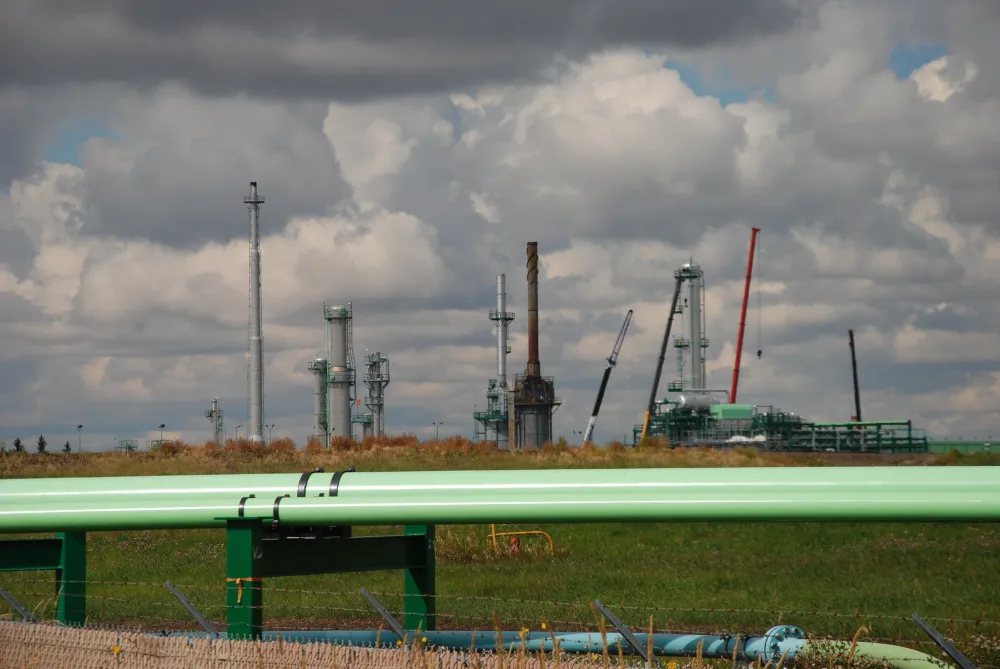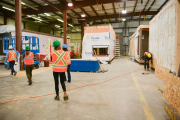The Alberta government announced in September that it would be investing $750 million from the Technology Innovation Emissions Reduction (TIER) fund into emissions reduction programs. TIER is Alberta’s industrial carbon pricing policy, and the fund comes from companies that choose to pay for carbon pollution they’re unable to reduce or eliminate at their facilities. Of the $750 million accrued as of mid-2020, by this month $445 million had been invested.
But with wallet in hand, Alberta is now at a critical juncture. The signs are growing that long-term demand for fossil fuels is unlikely to be what it once was. Next year, as the carbon price goes up to $40/tonne CO2e, the fund will be larger but the government has given itself permission to redirect funds into general revenue. So the investments we make now will have an impact on the province’s economic future for decades to come.
What has the province invested in so far?
The majority of that $445 million investment has been aimed at reducing emissions from the oil and gas sector, with the rest going to broader emissions-reduction efforts, low-carbon innovation, and flood mitigation projects.
It makes sense to invest some money to help the oil and gas sector decarbonize. The sector makes up 27 per cent of Canada’s emissions, and if the country is to meet its 2050 net-zero goal the oil and gas sector must shift to net-zero as well. The government has allocated $62 million specifically to reducing methane emissions, some to deploying existing solutions, and some toward research and development of new technology.
It has allocated $90 million for industrial efficiency and carbon capture, utilization and storage (CCUS). A further $50 million has been allocated toreducing methane emissions and improving industrial energy efficiency. And another $180 million is earmarked for emissions reduction technology and low-carbon innovation, which could go to projects in emerging sectors, oil and gas, and other industry.
Global shifts in energy are underway
As decisions are made about allocating that $180 million, let’s not forget the low-carbon side of the coin. Along with decarbonizing the province’s largest industry, we also need to invest more in where the world is headed — the new, emerging sectors of the decarbonized economy.
There are plenty of signposts that a global shift in energy systems is underway and picking up pace. While the shift will take time, the decisions we make now can lay the foundation to ensure that Alberta is poised to prosper in this new world. While some oil and gas will still be in use for decades to come, we must acknowledge that the role of the industry must change and become smaller over time if we are to avoid the worst impacts of climate change.
Oil companies like BP and Equinor, as well as consultancy McKinsey, all predict oil demand peaking within the next few decades, even without more ambitious climate action. And each year the projections of peak oil demand edge closer and closer. If this restructuring happens at the faster pace needed to achieve net-zero, as the IEA’s recent World Energy Outlook shows, demand for oil will drop over time. Either way, the oil and gas sector is unlikely to experience the rapid growth of decades past.
Future investments should target emerging sectors
The Alberta government has made significant investments in decarbonizing oil and gas, and must now turn to investing in emerging sectors. The temptation to use the TIER fund for general revenues must be resisted, as these investments are crucial to Alberta’s future success. The task at hand is to place smart bets on disruptive technologies that would not otherwise receive funding.
Others have pointed to potential opportunities:
- Lithium is a key component in batteries and a byproduct of oil and gas drilling. Costs are dropping rapidly and its use in electric vehicles and energy storage systems is expected to continue to grow.
- Hydrogen is also receiving attention as a contributor on pathways to net-zero. Alberta is well placed to produce renewable and low-carbon hydrogen.
- Geothermal is another energy source with growing interest. Alberta has both ample quantities of the resource and the skills to develop it due to the similarities with oil and gas drilling.
- Other growing clean energy exports are worth examining as well. These include clean electricity and power equipment, clean transport, energy efficiency, clean fuels, and mined clean energy materials. These sectors have grown by 10 per cent per year in the last five years — three times faster than all exported goods in the same period.
Not all bets will be successful, but the criteria are straightforward. Investments should be made in technologies and sectors that are disruptive, low carbon, and build off our province’s current skills. Directing the emissions reductions fund toward diversifying Alberta's economy is true to the province’s entrepreneurial spirit and will help the province withstand future global disruptions.









